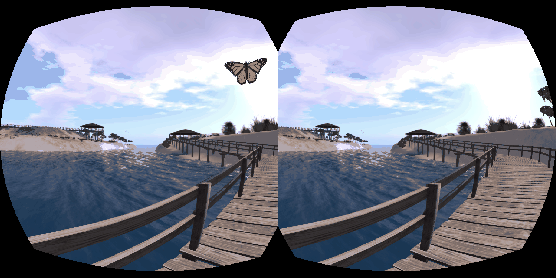
Next: Canonical head motions Up: 12.1 Perceptual Training Previous: Perceptual learning factors and Contents Index
 |
Figure 12.1 shows a simple error in which an object appears in the scene for one eye but not the other. The rest of the virtual world is rendered correctly. This may go completely unnoticed to untrained eyes. Solution: Close the left eye, while keeping the right one open; after that, switch to having the left eye open and the right eye closed. By switching back and forth between having a single eye open, the mismatch should become clear. This will be called the eye-closing trick.
Another common error is to have the right and left eye images reversed. It is easy have this problem after making a sign error in (3.50), or misunderstanding which way the viewpoint needs to shift for each eye. The phenomenon is known as pseudoscopic vision, in which the perceived concavity of objects may be seem reversed. In many cases, however, it is difficult to visually detect the error. Solution: Approach the edge of an object so that one side of it is visible to one eye only. This can be verified by using the eye-closing trick. Based on the geometry of the object, make sure that the side is visible to the correct eye. For example, the left eye should not be the only one to see the right side of a box.
Finally, stereoscopic vision could have an incorrect distance between the virtual pupils (the ![]() parameter in (3.50)). If
parameter in (3.50)). If ![]() , then the eye closing trick could be used to detect that the two images look identical. If
, then the eye closing trick could be used to detect that the two images look identical. If ![]() is too large or too small, then depth and scale perception (Section 6.1) are affected. A larger separation
is too large or too small, then depth and scale perception (Section 6.1) are affected. A larger separation ![]() would cause the world to appear smaller; a smaller
would cause the world to appear smaller; a smaller ![]() would cause the opposite.
would cause the opposite.
Steven M LaValle 2020-11-11